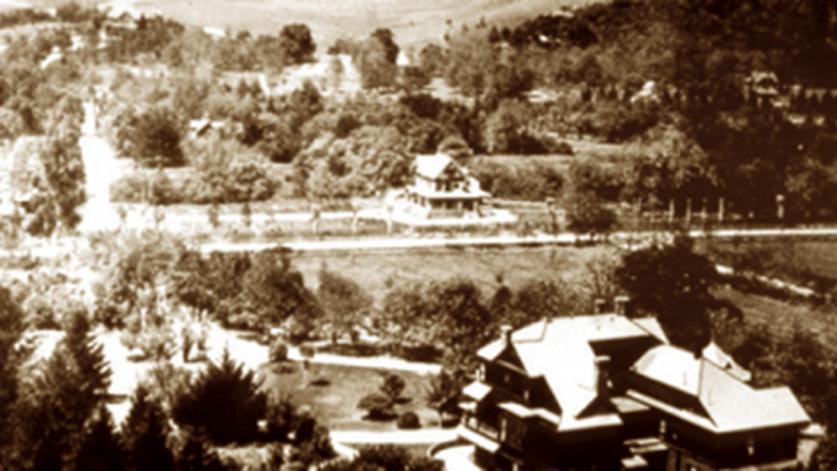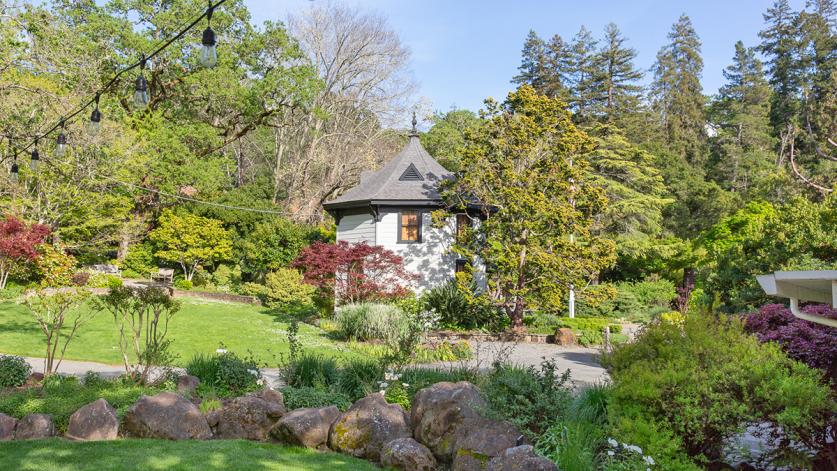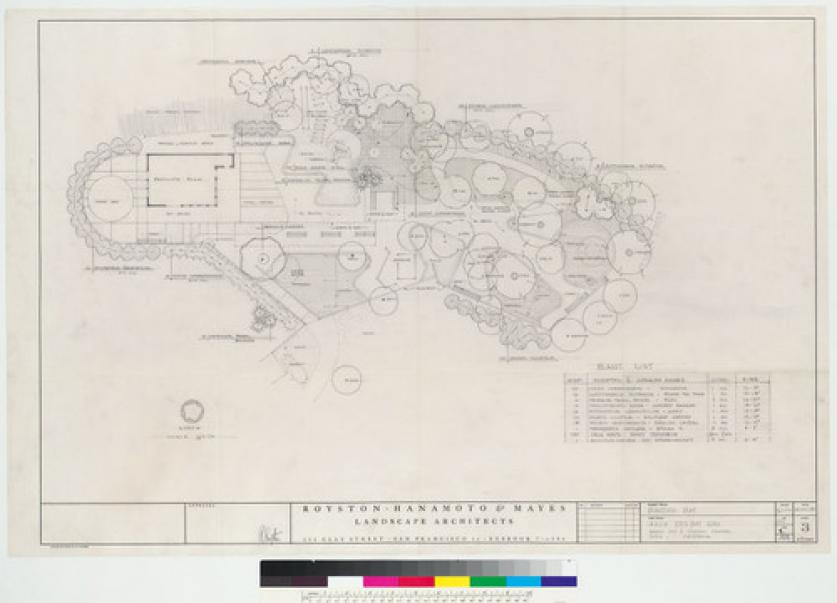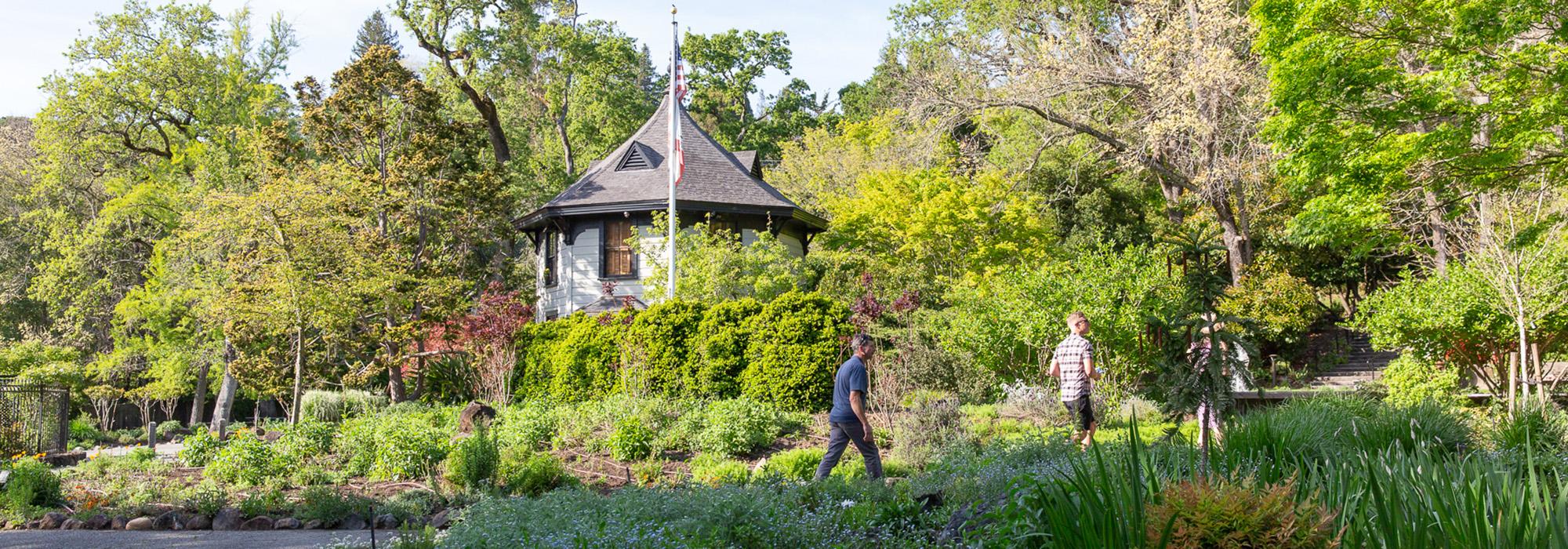A Closer Look at the Marin Art and Garden Center
One of dozens of sites to be toured during The Cultural Landscape Foundation’s upcoming What's Out There Weekend San Francisco Bay Area, the Marin Art and Garden Center is representative of the leadership role that landscape architects played in the postwar Modernist movement. Relatively unknown as an early project of famed landscape architect Thomas Church, the center is also home to an innovative playground design by landscape architect Robert Royston.
The center has its origins in the Sunnyside estate, which was originally built by James Ross, beginning in 1857, on former Rancho Punta de Quentin property. The estate passed through several owners before being gutted by fire in the early 1930s. A subdivision plan in the early 1940s prompted a group of conservation-minded women, led by Caroline Livermore, to gather community support and acquire the eleven-acre property to create a center for the arts, one that would serve as a “living memorial” to lives lost during World War II. Livermore and her associates also founded the Marin Conservation League, which has played a key role in saving many natural areas in the region.

Hired in 1947 to conduct a topographical survey of the grounds, landscape architect Thomas Church created an informal master plan for the grounds. That same year, local horticulturist Herman Hein took over as landscape designer for the center. Following Church's involvement, the architectural firm Wurster, Bernardi & Emmons drafted a master plan, which was never fully realized. The firm’s Russel Emmons did, however, design several buildings, including the Livermore Room and the Decorations Guild Building.

In 1956 landscape architect Robert Royston donated the design of a Modernist playground called Pixie Place. The gated playground’s design, featuring linear trellises, screened fencing, and an early use of splashpads, would lead to his subsequent commission at Krusi Park in Alameda. As the center grew in popularity in the 1950s, new buildings were constructed near Kittle Creek, a seasonal stream in the property’s northern section.

Located at the base of a wooded slope, the site contains a collection of native and ornamental trees, including large specimens planted in the nineteenth century. There are expansive lawns for public gatherings as well as various themed garden spaces, such as the Memory Garden, featuring two sculptures, The Reclining Lady, and The Reclining Girl, by Adaline Kent, the Habitat Garden, Edible Garden, and Rose Garden, among others. Surviving elements from the estate period include a network of curving pathways and the Octagon House, originally built in the 1860s as a well house. Encircling the property, a serpentine brick wall, inspired by Thomas Jefferson’s designs at the University of Virginia, was added in 1969. In keeping with the original intent behind the center’s creation, many of the landscape’s natural elements, including rocks, trees and arbors, have been dedicated by families in memory of lost loved ones.
As of 2019 the volunteer-based Pixie Parents have launched a fundraising campaign to replace key play features in the Royston landscape and make it compliant with the Americans with Disabilities Act. To learn more about the Marin Art and Garden Center, consider attending a free tour of the site during TCLF’s upcoming What’s Out There Weekend San Francisco Bay Area on September 14-15. To register, click here.



